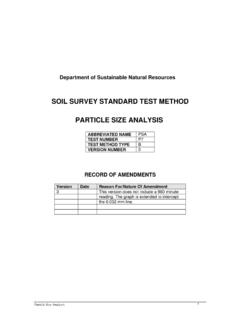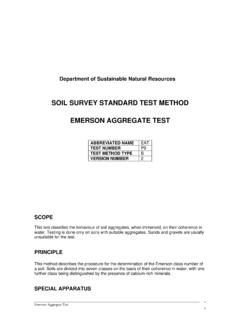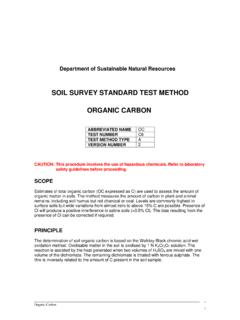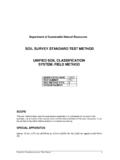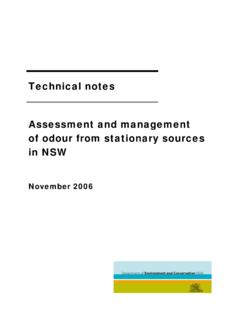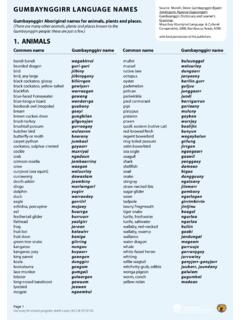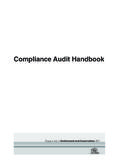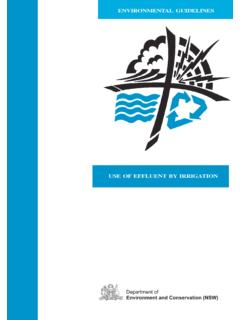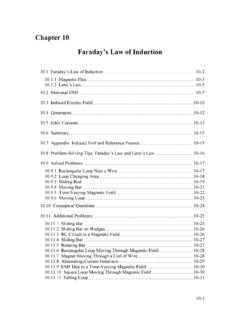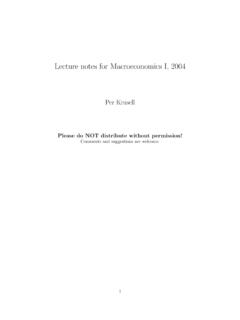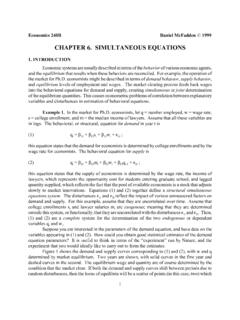Transcription of Soil Electrical Conductivity Test - Office of Environment ...
1 Electrical Conductivity1 Department of Sustainable Natural ResourcesSOIL SURVEY STANDARD TEST METHODELECTRICAL Conductivity ABBREVIATED NAMEECTEST NUMBERC1 TEST METHOD TYPEAVERSION NUMBER 3 SCOPEThe Electrical Conductivity indicates the amount of soluble (salt) ions in determination of Electrical Conductivity (EC) is made with a Conductivity cell bymeasuring the Electrical resistance of a 1:5 soil:water APPARATUS Conductivity meter and cell. Shaking Conductivity2 REAGENTSD istilled or deionised waterThe water is to have an Electrical Conductivity of <1 S/cm and have a CO2 concentration nomore than atmosphere Potassium Chloride Reference SolutionDissolve g KCl AR (previously dried at 105 C for 2 hours and make volume to 1 L withCO2 free deionised water.)
2 This solution has an Electrical Conductivity of dS/m at 25 Prepare a 1:5 soil:water suspension by weighing 10 g air-dry soil (<2 mm) into a 50 mL deionised water. Mechanically shake at 15 rpm for 1 hour to dissolve Calibrate the Conductivity meter according to the manufacturer's instructions using the KClreference solution to obtain the cell Rinse the cell thoroughly. Measure the Electrical Conductivity of the KCl at the sametemperature as the soil Rinse the Conductivity cell with the soil suspension. Refill the Conductivity cell withoutdisturbing the settled soil.
3 Record the value indicated on the Conductivity meter. Rinse thecell with deionised water between Conductivity3 CALCULATIONS If the meter is not equipped for automatic temperature compensation, carry out the followingcalculations:If the meter reads directly in Conductivity values, then calculate EC25 Where: S=Measured EC of suspensionK=Measured EC of KCl solutionIf the meter reads resistance value, then calculate EC25 Where:S=Measured resistance of suspensionK=Measured resistance of KCl solutionREFERENCESP iper, CS 1942, Soil and Plant Analyses.
4 University of , GE & Higginson, FR 1992, Australian Laboratory Handbook of Soil and WaterChemical Methods, Melbourne, Inkata Press. (Australian Soil and Land SurveyHandbooks, vol 3)NOTE There is no clear relationship between Electrical Conductivity (1:5 soil:water) and total solublesalts due to the different ionic conductivities of the various salts and the influence of the soilparticles. An approximate value for the percentage total soluble salts is obtained by multiplyingthe Electrical Conductivity at 25 C (dS/m) by )/(25= )/(25xSKmdSEC=
